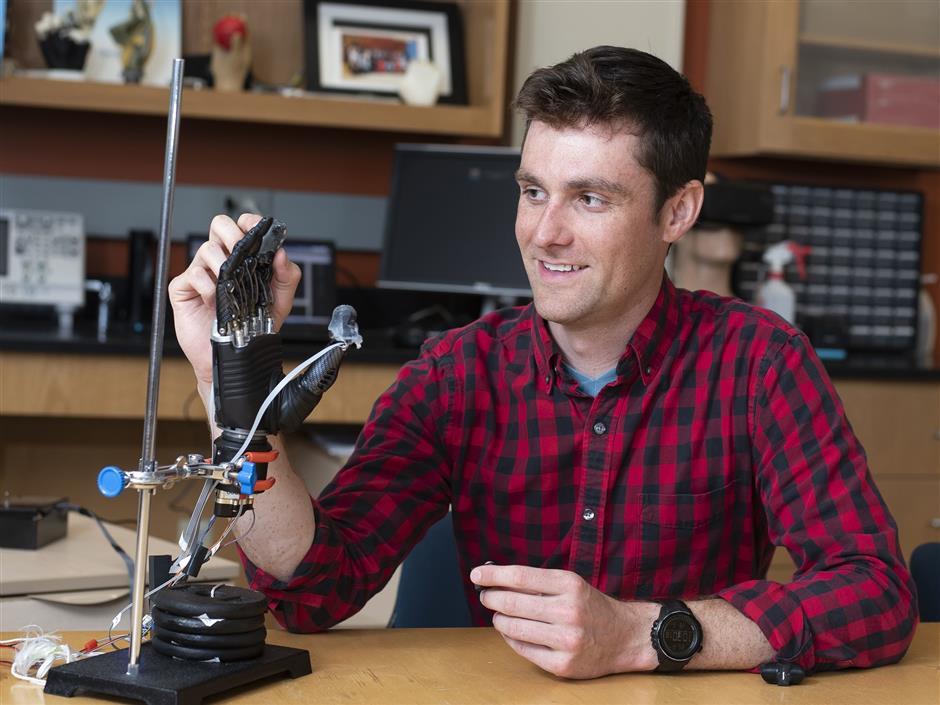Johns Hopkins Scientists Develop ‘Electronic Skin’ So that Amputees Can Feel With Their Prosthetic Hands

The “phantom limb,” a common feeling for amputees around the world can be fixed with an electronic skin (e-dermis). This skin is being developed at Johns Hopkins University by a team of scientists. The skin will layer prosthetic hands to allow amputees feel when they touch objects with a prosthetic limb.
The first volunteer in the research said that “after many years, I felt my hand, as if a hollow shell got filled with life again.”
How Does the E-Dermis Work?
The layer of e-dermis is made of fabric and rubber, and it contains sensors that act as nerve endings. Whatever the sensors feel, they send impulses to the peripheral nerves, creating the feeling of touch and pain.
Luke Osborn is part of the team and a graduate student in biomedical engineering, explaining that the sensor “acts like your own skin would” and that it is inspired by human biology that has “receptors for both touch and pain.”
He added that a prosthetic hand available on the market could be fitted with an e-dermis that will be able to inform the wearer if they pick up “something that is round or whether it has sharp points.”
The e-dermis is very useful, especially in case of pain, as it can inform the user that the device can be potentially damaged.
The research team at Johns Hopkins University has gathered many members of different departments: Biomedical Engineering, Electrical and Computer Engineering, Neurology, and it also contains researchers at the Institute of Neurotechnology from Singapore.
A New Type of Prosthetics
Osborn explains that he wants to change the design of prosthetics and allow amputees to regain “meaningful, tactile feedback or perception.”
Nitish Thakor is the senior author of the study. He is also a professor of biomedical engineering and the director of the Johns Hopkins’ Biomedical Instrumentation and Neuroengineering Laboratory. He explains that the e-dermis can make the user feel a light touch or a painful one, stimulating the amputee’s nerves through the skin and making a prosthesis “more like a human hand.”
The e-dermis uses sensors that encode sensations and send information to the skin. Researchers analyzed electroencephalography of a test subject, seeing that the person could feel those sensations in his prosthetic hand.
After connecting the e-dermis to the volunteer’s skin through transcutaneous electrical nerve stimulation (TENS) the team concluded that the test subject felt a natural reaction to pain after touching a pointed object and no pain after touching a round object.
In the future, Osborn believes that the e-dermis technology can be used in creating gloves and space suits for astronauts.
0 comments